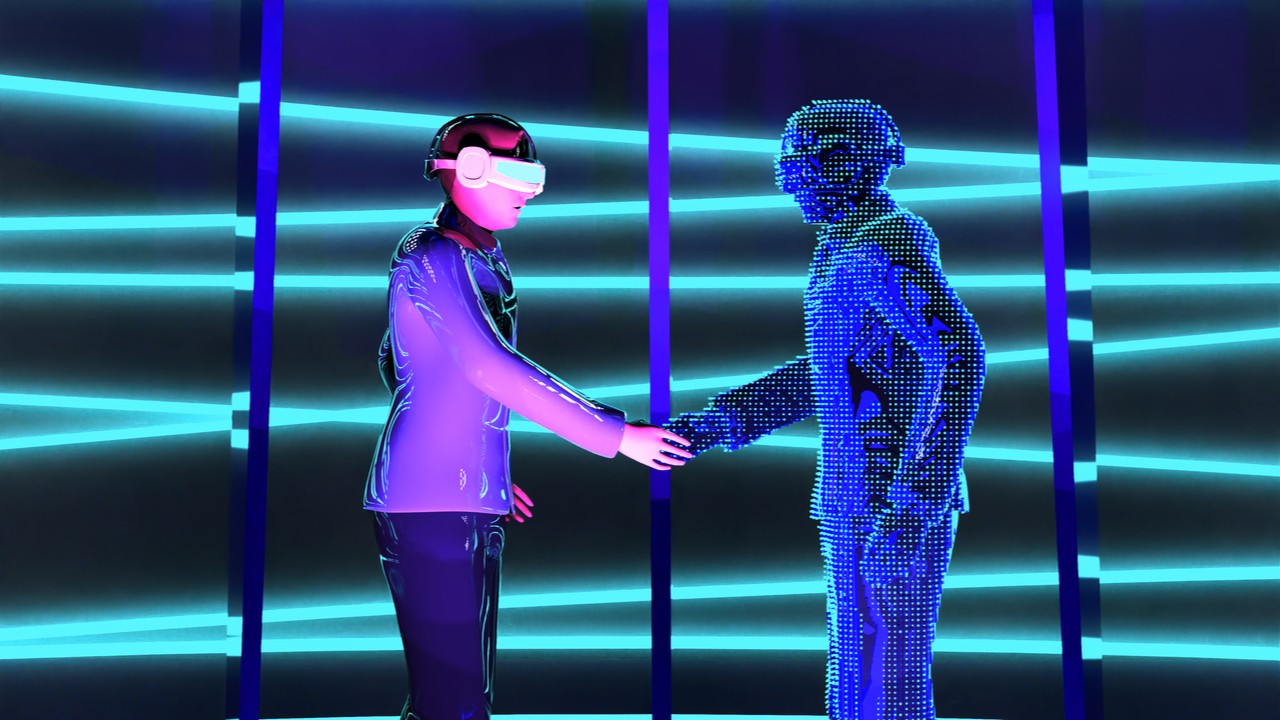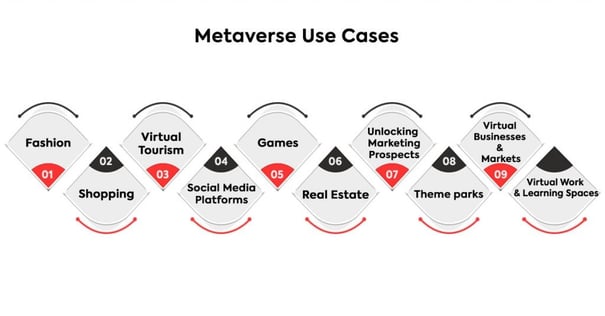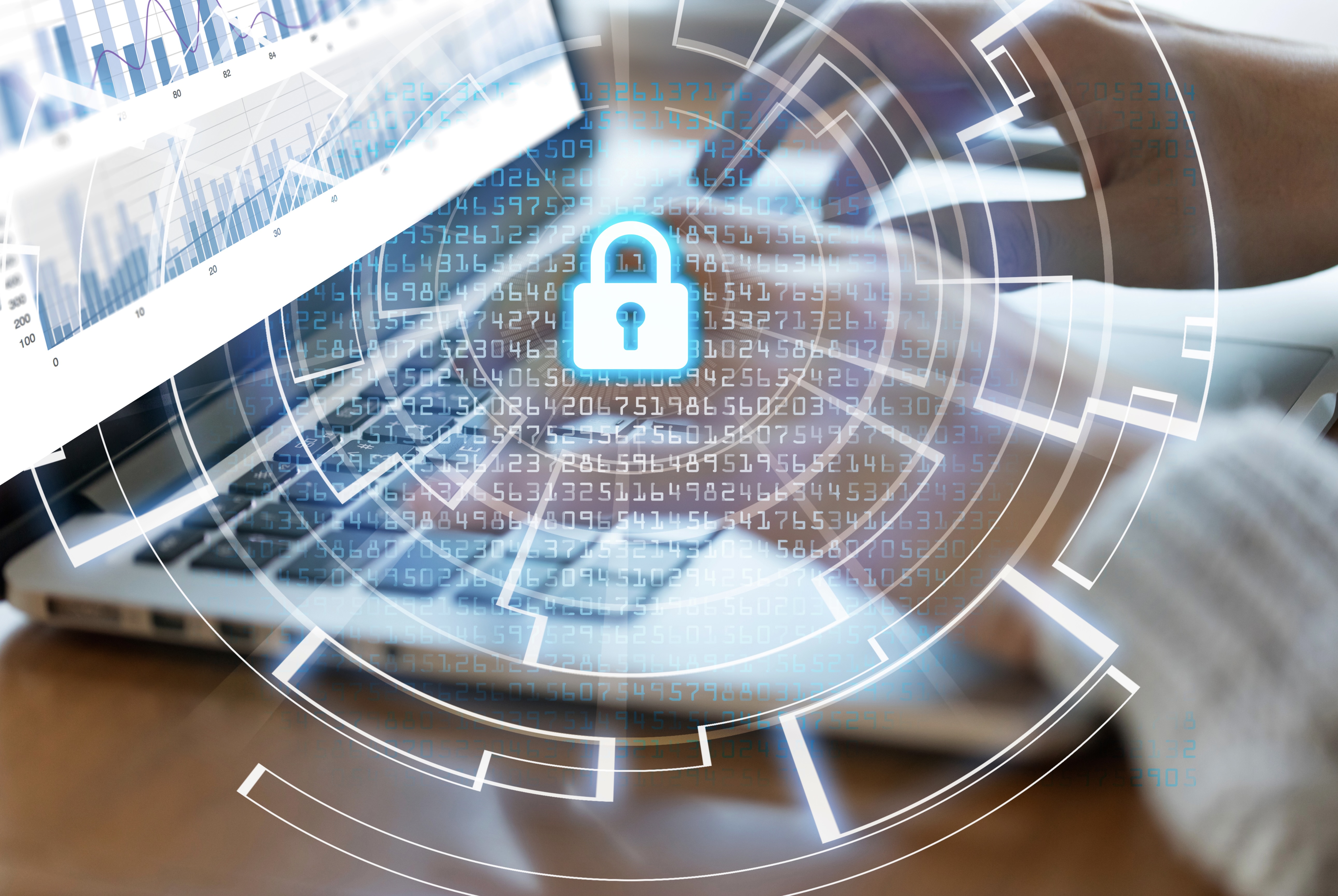What is the impact of the metaverse on companies?

As digital technologies move into the next stage of their evolution - the metaverse - companies need to ask themselves two questions: How will the metaverse change their business? And how can they get ahead of this change and shape it to their advantage?
The metaverse is already an integral part of the business world. It will only become more central.
I. A world where data and technology are rapidly converging
There is much debate about the definition of the metaverse, but it is more useful to take a practical view and focus on the productive use cases it enables. The metaverse relies on the convergence of multiple technologies and the proliferation of data and content, which combine to create value for users. In the case of consumers, it may be a virtual reality (VR) gaming platform, while for businesses, it may be a machine learning algorithm that integrates multiple and varied datasets to provide better insights and improve decision making.
In this sense, the metaverse encompasses broad categories of technologies (including computing, connectivity, artificial intelligence, and machine learning) that combine in rich ways to create new and unprecedented value. It's an aircraft engine technician connecting via the company's hotline to an expert 2,000 miles away. It's the digital twin of a power grid that highlights maintenance needs or safety flaws. It's a smartphone app that integrates with an augmented reality windshield to provide driving instructions and feed them to the car's automatic driving algorithms. It's the technology that allows emergency services to respond when a phone or watch belonging to an injured person automatically sends an SOS.
It's hard to pinpoint where the metaverse ends. It's on the rise, thanks in part to continued advances in technologies such as augmented reality (AR) and VR, big data, artificial intelligence, machine learning, and the blockchain. Just as our understanding of the universe and what it encompasses has been greatly expanded by the Hubble Space Telescope, the nature of the metaverse is a work in progress. If we were able to define its boundaries today, it is almost certain that a future technological advance would lead us to reassess them.
If the metaverse seems a bit amorphous, its use cases are easier to spot and are multiplying rapidly. Many companies already see the metaverse as an opportunity to connect with consumers in new ways. But for B2C and B2B companies, it's really a new way of doing business and an opportunity to reinvent everything from customer journeys to operational processes. There are dozens of use cases for companies across all sectors and industries, and the technology behind these applications is still in its infancy. Their impact ranges from increased convenience and efficiency (remote maintenance, for example) to life-changing and disruptive (enhanced surgical assistance and home health care). New use cases can lead not only to faster and easier ways of doing things, but also to entirely new industries and business models.
The metaverse experience takes place on digital devices (laptops, tablets, smartphones, and AR or VR headsets), but these are just the means of access. The immersive potential of the metaverse can be experienced in a variety of ways, through AR or VR goggles or the rich data sets produced by AI or machine learning algorithms. In the metaverse, the physical world is converted into digital data and recreated or represented digitally, either as a reflection of reality (digital maps or images, for example) or as a fiction or fantasy (a video game).
"Putting people, places, things into a physics engine, and then making all the people, all the places, all the things in the physics engine relate to each other"
Satya Nadella, Microsoft CEO
For B2B companies in particular, the power of the metaverse lies in the data that makes up these virtual representations. This data can come from human users and their digital devices, as well as a myriad of other sources. Many of these are embedded in the Internet of Things (IoT) and include cameras, sensors, gauges, detectors and medical devices, among many others. While the physical world, and the economic opportunities associated with it, are limited by the laws of physics, the metaverse is a universe of interacting physical and digital worlds, and the economic potential associated with it is consequently amplified and infinite.
The metaverse consists of multiple layers of data, their interconnections, and mechanisms to ensure user trust in each use case. The data layers and connections include:
- Digital content or data, such as digital twins in B2B and games and movies in B2C.
- Technology connecting digital data layers, such as machine-to-machine learning.
- AI, machine learning, and blockchain capabilities to enhance, connect, translate, and optimize data for specific use cases and ensure that users have confidence in the security and privacy of their experience.
- Connections between digital layers and the physical world via all kinds of devices (it is these connections that make the metaverse useful to humans).
The metaverse is now present in our daily lives. The constant connectivity of its systems makes the metaverse permanently available, making it a part of everyday life and business, as well as driving significant, though often unnoticed, value as an economy in its own right.

II. The phases of the metaverse and the growth strategies of companies
Technology is only as good as its weakest link. The metaverse evolves rapidly because the technologies that converge to make it possible are improving rapidly. Moore's Law continues to drive the increase in computing power. Comparable "laws" named after George Gilder and Martin Cooper are driving increases in bandwidth and spectrum, respectively, enabling faster, higher quality connectivity and providing more faithful renderings that better mimic real-world latency.
As a result of these improvements, growth in the metaverse market for both consumers and businesses has been robust. In the first phase - the game-centric metaverse - consumers looking for more diverse experiences shifted from winnable to winnable games, triggering an explosion of engagement. Gaming platforms like Fortnite and Roblox have attracted hundreds of millions of users. Axie Infinity now has a steady stream of users who "work" and make a living in the metaverse. In the second phase, as the layers of the metaverse grew and users applied them to multiple aspects of work and life, the spread of VR and AR devices and the evolution of game engines and computing power enabled deeper immersion.
In the third phase, currently underway, a broader ecosystem is developing through ever faster and more extensive connections. We are seeing monetization through crypto ecosystems, including the birth and rapid growth of crypto-currencies (both governance and utility tokens) and virtual economic systems and assets (such as decentralized finance and non-fungible tokens). While crypto-currencies are going through a turbulent period, these instruments - which can still be owned, bought and sold - bridge the gap between virtual reality and the real world and are driving the use of the metaverse for an increasing variety of purposes, including work and healthcare. As virtual assets become more portable and exchangeable across the various platforms of the metaverse, the metaverse will evolve into a more integrated and interconnected ecosystem with more diverse functions.
If we think of the metaverse as a digital representation of the physical world organized in layers, like a technology stack, we can see how companies will participate in the different layers. Some will be active in the lower layers, building the digital infrastructure, providing funding, and offering connectivity or key services. Most, however, will focus on the top, application layer, where they will interact with users (B2B or B2C) in metaverse environments. So far, most of the action has been in the B2C realm, particularly games and, increasingly, immersive virtual experiences, such as concerts. But B2B applications are quickly catching up and may well be driving much of the business value.
Retail, fashion and apparel companies were among the first to jump in, but a growing list of large companies in the technology, telecommunications, healthcare and automotive sectors, among others, have become active in the metaverse. The numbers are quickly getting big. Microsoft is spending nearly $70 billion to acquire Activision Blizzard, in part to be better able to "put people, places, things into a physical engine, and then have all the people, all the places, all the things in the physical engine be linked to each other," as CEO Satya Nadella told the Financial Times. There are many reasons for non-tech companies to pay attention. For example, at the operational level, a Fortune 500 retailer could realize 1.5 to 2 percentage points of margin improvement by improving staff onboarding and training, $200 million to $400 million by increasing store traffic and customer loyalty through a better in-store experience, and $500 million to $750 million by streamlining operations and improving inventory control.
Companies that want to play the game must first understand how their strategy and sustainable advantage may change as the competition evolves. They need to assess what metaverse assets and capabilities they have, how their current value propositions will evolve, and how they can defend their current position and monetize metaverse assets in the future. They will also need to address issues such as protecting their customers' digital identities in the metaverse, providing links between data layers to enhance connectivity services, and creating winning metaverse solutions for industry-specific use cases.
From a technology perspective, winning in the metaverse depends on three things for B2C and B2B companies:
- The most important is having - or ensuring easy access to and control of data and content and the surrounding "geography" on the metaverse application layer.
- Provide strong links between the digital layers and the physical and virtual worlds (human-computer interface), including IoT sensors to enable connectivity between the human and the metaverse and blockchain technology to create authentic, unalterable ledgers for trust purposes.
- Provide the tools necessary for consumers and businesses to spend more time in the metaverse, such as computing power, low latency to ensure fast access to information, AI to ensure continuous learning, fault tolerance and enhanced contextualization, and privacy and permissions to ensure proper controls.
III. Ten Steps to Developing Metaverse Capabilities for Companies
Here are ten steps companies can take to begin developing a strong metaverse strategy and capability.
A. Define a Broad Vision
As metavers evolve and mature, many more use cases will be added to the dozens that already exist. At this early stage, companies need to define a broad vision of what they want to achieve, including clear definitions of what to do and what not to do. Experience shows that it is critical to ensure broad alignment within the organization so that teams can act autonomously when experimenting with potential applications. The willingness to experiment, fail, learn, and move quickly to the next use case is essential.
B. Create the necessary digital assets and technology tools
Begin with a technology audit of the entire metaverse stack to identify gaps that may impede achievement of goals. Create the technical platforms and tools (e.g., a data capability) that will facilitate implementation of the strategy and expansion of the effort over time as it generates results.
C. Create a Digital Matching Strategy
It's important to start integrating metaverse use cases into current operations early. Look for opportunities to automate or digitize operations and develop IoT use cases across verticals that support the company's current and future roadmap. For example, digital twins using real-time data from current facilities or operations can be used for management and monitoring, training and development, or design and improvement.
D. Pursue metavers customer discovery
Demonstrating the value of metavers to the business requires addressing specific customer problems and developing use cases that can generate new revenue streams. Extensive research into the evolution of customer journeys will provide important information for defining the company's metavers roadmap.
E. Build trust with metavers customers
The metaverse is new, and many customers will be wary and take a wait-and-see approach. Companies need to think carefully about how they are going to earn the trust of their customers. Demonstrating good Web 3.0 data management and showing how the company leverages blockchain technology to ensure privacy and security is just the beginning.
F. Delivering personalized attention through AI
The combination of metaverse and AI enables segment-of-one offerings that can be a powerful differentiator in increasingly competitive industries. But to develop these capabilities, companies must develop the ability to continuously update their understanding of changing customer needs in order to provide ongoing personalized attention and engagement.
G. Track and Measure Progress
It can be difficult to develop a clear definition of what winning is in the rapidly changing metaverse. Try creating dashboards of transparent, real-time metrics, including forward-looking Web 3.0 frameworks, to track and evaluate product, team, customer and operational performance.
H. Develop capabilities to compete
Assess internal talent capabilities (good engineering teams, for example) and identify gaps. Establish a plan to hire or otherwise acquire the skills needed to ensure success.
I. Engage the organization
Companies can engage their employees in the metaverse journey and improve the employee experience by using the metaverse in recruitment, onboarding, coaching, and training. If employees experience the metaverse firsthand, they will be more likely to accelerate change.
J. Establish a mission control office
Establish a metavers mission control office with a clear mandate and processes to monitor and oversee the metavers effort. A strong management capability can define the path forward, highlight dependencies between teams, and reduce risks to the overall plan.
The metaverse represents a vast opportunity that goes far beyond avatars, games, augmented reality (AR) and virtual reality (VR), and consumer applications. Devices provide the window, but success will require a solid understanding of the confluence of business strategy, traditional and virtual digital assets, and the new tools and assets of a Web3 environment. Now is the time to start building that understanding.


